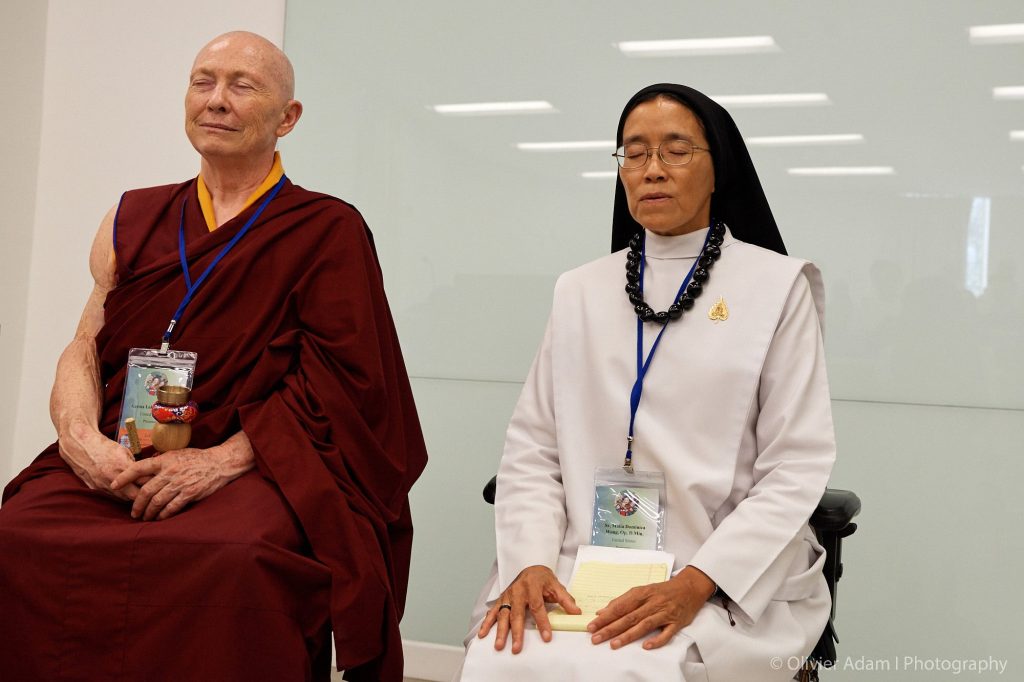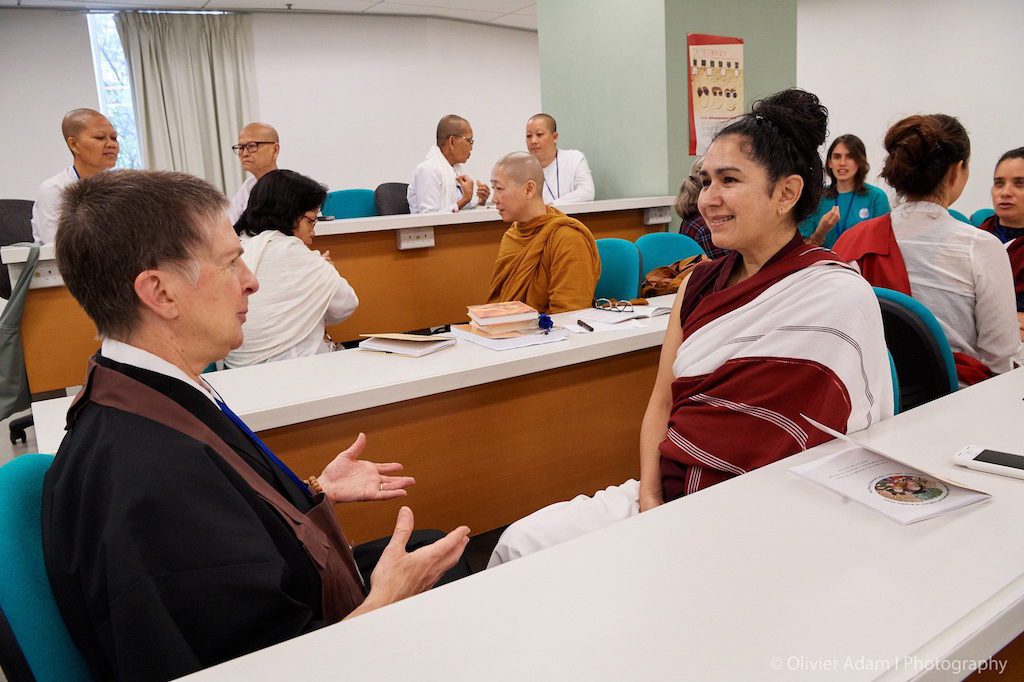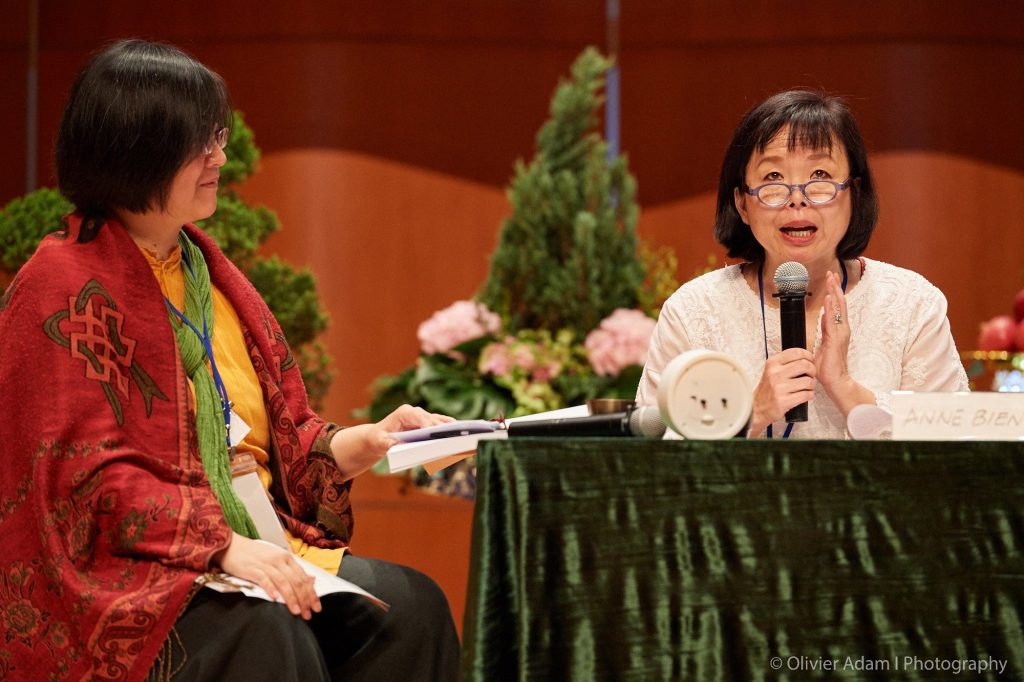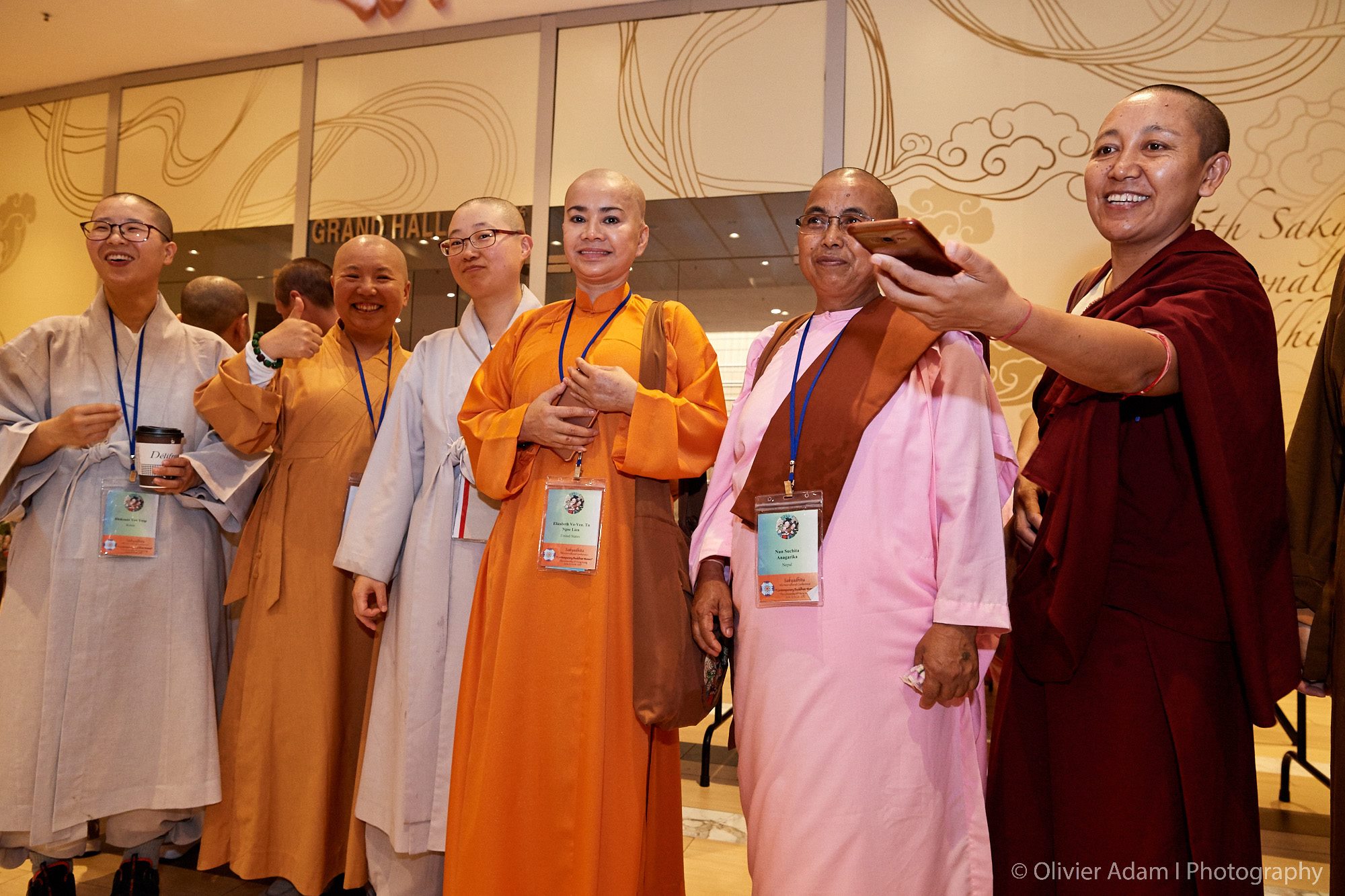Although gender equality has enjoyed progress in many sectors of our society, we can still see that discrimination against women in varying degrees is a feature of most societies. Gender casts a shadow in ongoing discussions about the re-establishment of Bhikkhuni Order, one of the crucial fourfold assemblies in the Theravada and Vajrayana Buddhist traditions.
Historically, it is evident that the Buddha recognized women’s capabilities in the society of monastics and their spiritual potential in becoming fully ordained nuns. In our time, this concern remains one of the most urgent and defining issues and was recently addressed in a conference on Buddhist women held at the University of Hong Kong (HKU).

The conference “Contemporary Buddhist Women: Contemplation, Cultural Exchange and Social Action” was held at the Grand Hall of the University of Hong Kong (HKU) from 22–28 June. It was organized by the Sakyadhita International Association of Buddhist Women (SIABW) with the Centre of Buddhist Studies (CBS) at HKU. With over 800 participants from 31 countries, the event was exactly such a forum for building and reinforcing cross-cultural networks of female lay practitioners and monastics networks, broadening a wide range of topics, such as interreligious dialogue, indigenous Buddhist experience, inter-generational dialogue, Buddhist transcultural exchange, expressed through music, literature, drama, painting, social media, martial arts, charitable activities, social entrepreneurship, and community leadership.
Dr. Rongdao Lai, Assistant Professor of Religion at the University of Southern California, gave a keynote speech titled, “Strength in Diversity: Toward an Inclusive Dialogue on Social Action.” She said: “While acknowledging the pressing issue of (re)presenting Buddhism in a religiously diverse world, this talk focus on a different form of diversity – diversity within Buddhism itself.” (SIABW, Conference Schedule Booklet, 5)

“There are many different ways that we may focus our energies, such as meditation practice, active social engagement, studies, teaching, parenting, artistic expression, and a range of other options,” Sakyadhita highlighted in its welcome message. “The beauty of Buddhist women is that we come from different countries and cultures, with different interests and diverse approaches to Buddhism, yet together we represent enormous power for good in the world.” (SIABW, Conference Schedule Booklet, 4)
Sakyadhita was established in 1987, an umbrella under which many women from around the world came to create a new pathway and fulfil their dreams. For me, this year’s symposium was a wonderful way to draw many of us together to not only exchange views and experiences, but also to celebrate the thirty years of Sakyadhita’s work that have benefited religious and non-religious women alike.
I got to know this wonderful Buddhist women’s association personally in 2015. I was presenting a paper “Controversies and Prospects: Issues Surrounding the Establishment of the Female Monastic Sangha in Bangladesh” at the 14th Sakyadhita Conference on “Compassion and Social Justice” from 22 to 30 June 2015 in Yogyakarta, Indonesia. I drew attention to the female monastics in Bangladesh who were being neglected by the Supreme Sangha Council of Bangladesh. Nevertheless, due to the great effort made by Bangladeshi female monastics, at present, some nuns who, after receiving the upasampada (higher ordination) in Sri Lanka, established the Bhikkhuni Order in Bangladesh. I am very grateful to Venerable Karma Lekshe Tsomo for believing that my presentation was worthy of being considered in the conference.

As a PhD student at CBS, I enjoyed each and every single moment during this year’s conference as I came to know many more people and reconvene with old friends.
References
SIABW. Sakyadhita: 15th International Conference on Buddhist Women (Conference Schedule booklet). Hong Kong: The University of Hong Kong, 2017.
See more
15th Sakyadhita International Conference (SIABW Website)

